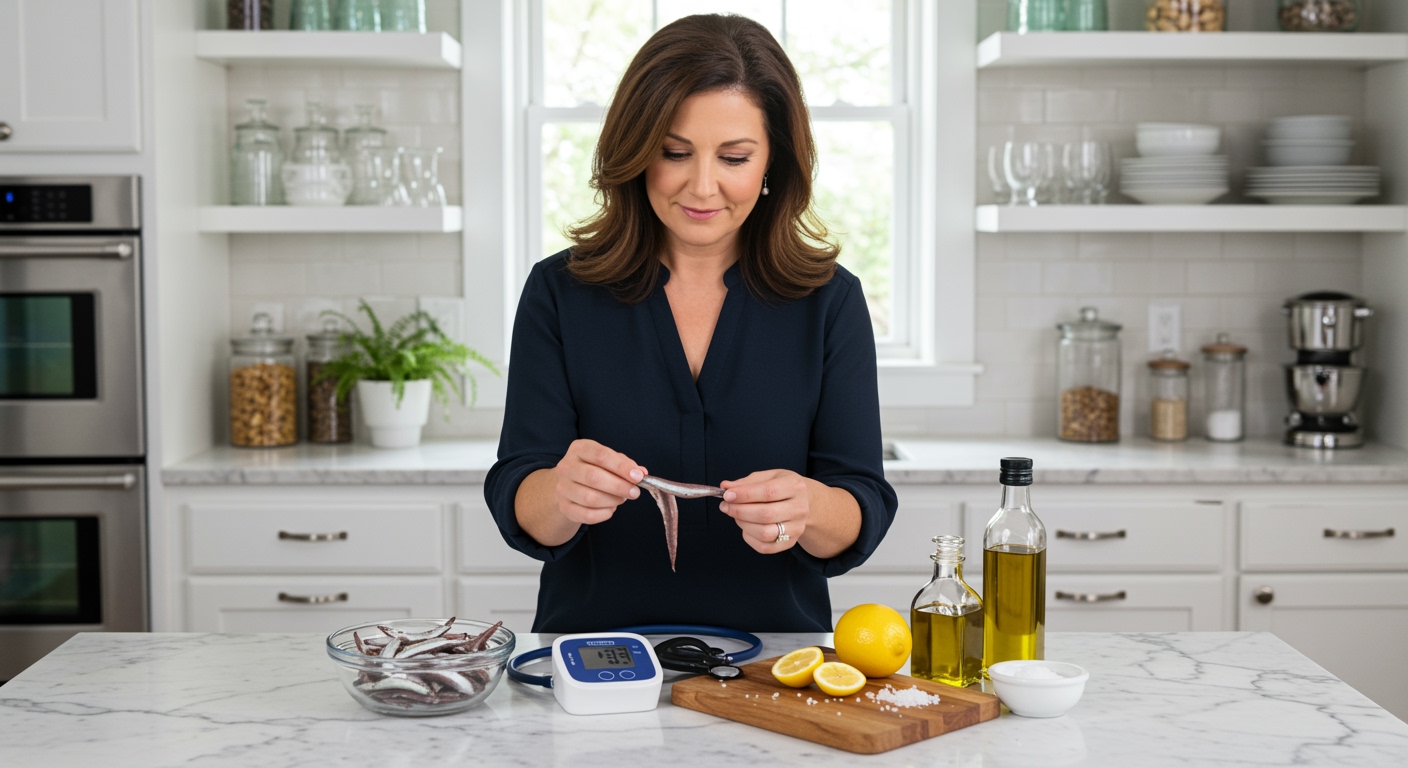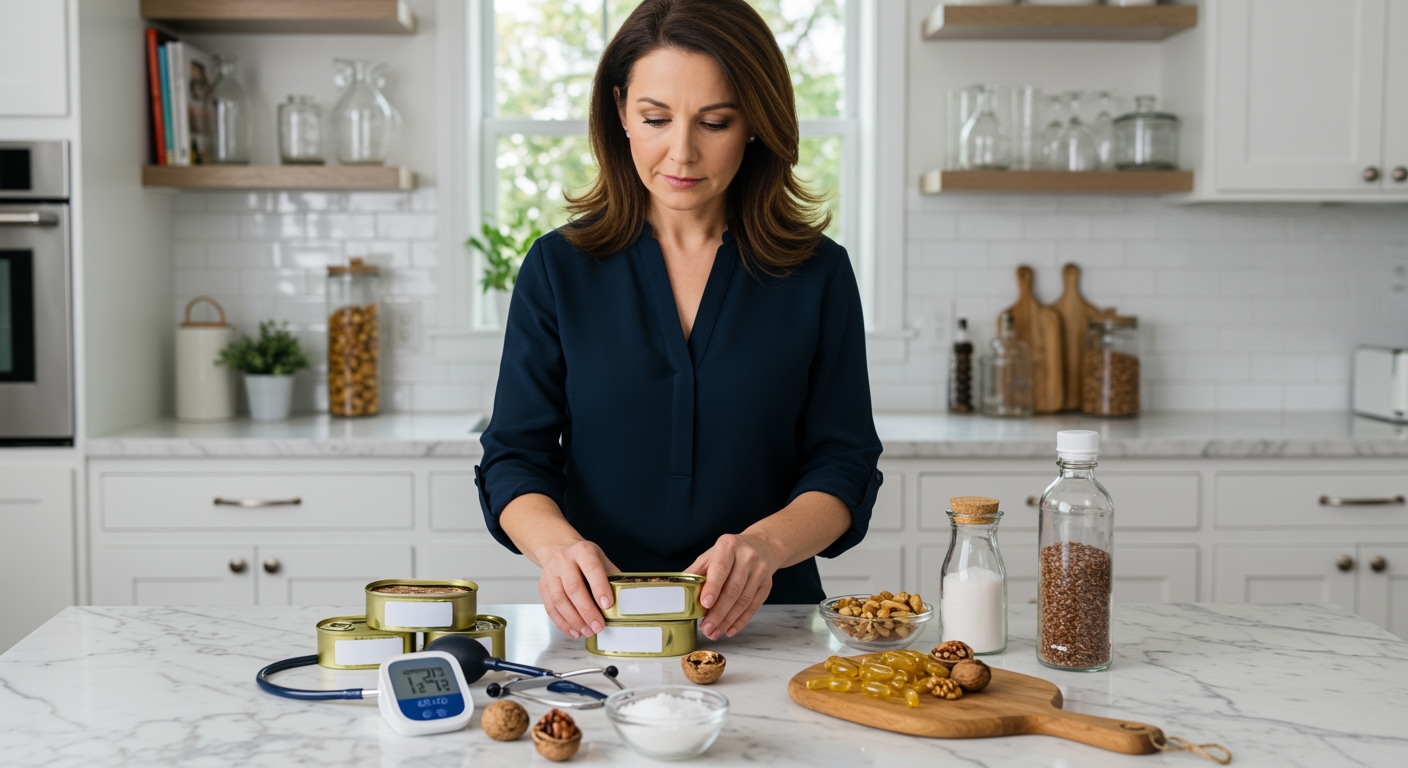✪ Key Takeaway: Ice cream can temporarily raise blood pressure due to sodium and sugar content, making it unsuitable for low blood pressure treatment.
Introduction
Your doctor just told you that your blood pressure is too low, and now you are wondering if ice cream could be your delicious solution.
You might be thinking this because ice cream contains sodium and sugar, both of which can affect blood pressure levels in the short term.
Hi, I am Abdur, your nutrition coach, and today I am going to explain whether ice cream can actually help with low blood pressure and what you need to know about this frozen treat.
Does Ice Cream Raise Blood Pressure?
Ice cream does cause a temporary increase in blood pressure, but this effect is neither healthy nor sustainable for managing low blood pressure.
The sodium content in ice cream ranges from 50 to 100 milligrams per half-cup serving, which causes your body to retain more water.
This water retention increases blood volume temporarily, leading to higher pressure in your blood vessels.
The sugar content also plays a role by causing rapid spikes in blood glucose levels, which triggers insulin release and affects your cardiovascular system.
However, these effects last only 2 to 4 hours and come with significant health risks that outweigh any temporary benefits.
Regular consumption of ice cream for blood pressure management would lead to weight gain, diabetes risk, and other cardiovascular problems.
✪ Fact: One cup of ice cream contains about 15 grams of saturated fat, which is 75% of your daily recommended limit.
What Happens When You Eat Ice Cream With Low Blood Pressure?
When you have low blood pressure and eat ice cream, your body experiences a complex series of physiological responses that can feel confusing.
Initially, you might feel slightly more alert as your blood pressure rises from the sodium and sugar intake.
Your kidneys respond to the increased sodium by holding onto more water, which increases your blood volume temporarily.
The cold temperature of ice cream can also cause vasoconstriction, where your blood vessels temporarily narrow, further raising blood pressure.
However, this is followed by a rebound effect where your blood pressure may drop even lower than before once the temporary effects wear off.
The high caloric density of ice cream also diverts blood flow to your digestive system, which can worsen low blood pressure symptoms like dizziness.
This creates an unhealthy cycle where you might crave more ice cream to maintain the temporary blood pressure boost.
✪ Pro Tip: Monitor your blood pressure 2 hours after eating ice cream to see how your body actually responds.
Are There Better Foods For Low Blood Pressure?
Yes, there are much better and healthier foods that can help manage low blood pressure without the negative side effects of ice cream.
Salty snacks like olives, pickles, and salted nuts provide sodium in more controlled amounts with additional nutrients.
Foods rich in vitamin B12 and folate, such as eggs and leafy greens, help prevent anemia-related low blood pressure.
Drinking more water throughout the day is the most effective way to increase blood volume naturally without added calories or sugar.
Caffeinated beverages like coffee or green tea can provide a temporary but safer boost to blood pressure compared to ice cream.
Foods high in healthy fats like avocados and nuts support overall cardiovascular health while providing sustained energy.
Small, frequent meals help maintain steady blood sugar levels, which prevents the blood pressure drops associated with large meals.
✪ Note: Increasing your daily water intake by 16 ounces can raise blood pressure by 10-15 mmHg within 15 minutes.
When Should You Avoid Ice Cream With Low Blood Pressure?
You should avoid ice cream if you have low blood pressure caused by underlying health conditions that require medical management.
People with diabetes should never use ice cream to manage blood pressure because the sugar content can cause dangerous glucose spikes.
If you are taking blood pressure medications, ice cream can interfere with how these drugs work in your system.
Those with heart conditions should avoid ice cream because the saturated fat content can worsen cardiovascular health over time.
If you experience severe symptoms like fainting or chest pain with low blood pressure, ice cream is not an appropriate treatment option.
People trying to lose weight should not use ice cream for blood pressure management because it contains 200-300 calories per serving.
Always consult with your healthcare provider before using any food as a treatment for medical conditions like low blood pressure.
✪ Fact: Low blood pressure below 90/60 mmHg requires medical evaluation, not dietary self-treatment with ice cream.
The Bottom Line
Ice cream is not a good solution for low blood pressure because any benefits are temporary and come with significant health risks.
Real health solutions require sustainable strategies, not quick fixes that create more problems than they solve.
I would love to hear about your experiences with managing low blood pressure or any questions you might have about nutrition and blood pressure in the comments below.
References
At NutritionCrown, we use quality and credible sources to ensure our content is accurate and trustworthy. Below are the sources referenced in creating this article:





